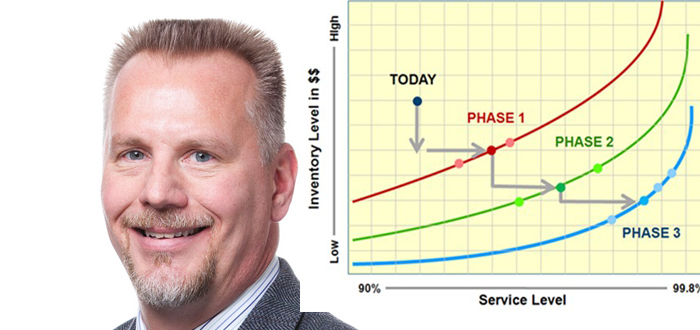-
BLACKOUT TECHNOLOGIES TARGETS TELEMATICS-INTEGRATED MOBILE DEVICE BLOCKING TO COMBAT SMARTPHONE DISTRACTION - 2 days ago
-
OpenADR Alliance announces first OpenADR 3.0 certified products with EVoke Systems, E.ON Energy and Universal Devices - March 25, 2025
-
Growing fulfilment and contract packer appoints new Managing Director - March 25, 2025
-
When is it time to invest in a WMS? Understanding the key trigger points - March 25, 2025
-
eCapital helps Vantage Recruitment on its journey to financial success - March 24, 2025
-
Hugo Beck Celebrates 70 Years of Packaging Innovation with Open House Events - March 20, 2025
-
PROLOG FULFILMENT SUPPORTS LUNA DAILY’S COMMITMENT TO BETTER BODY CARE FOR ALL WOMEN - March 19, 2025
-
Motion Ventures launches largest-ever maritime tech fund at $100M to meet the industry’s new pace of adoption - March 18, 2025
-
ITD GLOBAL APPOINTS GROUP CHIEF REVENUE OFFICER - March 17, 2025
-
SURECAM TEAMS UP WITH ENTERPRISE FLEX-E-RENT FOR VEHICLE REPAIR & MAINTENANCE CONFERENCE - March 14, 2025
Supply Chain Metrics – Gaining Visibility in a Data-rich World.
By Henry Canitz – Director Product Marketing & Business Development, Logility
The late consultant, educator, and author, Peter Drucker, is often quoted as saying “you can’t manage what you can’t measure.” This holds just as true today as the day it was first said. I would take this a step further and say you can’t know whether or not you are successful unless you have also defined what success is and track against that definition. The second part of Drucker’s quote, “if you can’t measure it, you can’t improve it,” really brings home the importance of having the right set of metrics.
In the field of supply chain management, we have created an abundance of metrics and key performance indicators (KPIs). As practitioners, it is our responsibility to determine which metrics are important to our company’s success and how to quickly and easily extract insights from these metrics and turn them into actions.
For the past 30 years I have been involved with multiple efforts to build a set of supply chain metrics and have learned a few things along the way.
One Size Does Not Fit All
When it comes to supply chain metrics, “beauty is in the eye of the beholder.” Each functional area of the supply chain (purchasing, planning, distribution, manufacturing, customer service, etc.) requires a different set of metrics. However, this does not mean you should draw a line in the sand between functional groups. Often the performance of one function has a direct impact on the performance of another. For example, maximizing factory efficiency can lead to a surplus of inventory. In another example, minimizing distribution expense by going with the low cost shipping option, may extend shipment times and negatively impact customer service levels.
The outputs of one supply chain function are often the inputs for other functions. To effectively manage the end-to-end supply chain, you need higher-level metrics that align and synchronize the actions and corresponding performance measured by lower-level metrics. In effect, a hierarchy of supply chain metrics must be developed to ensure the supply chain is managed in a way the provides maximum benefit to the company while also effectively managing each functional area.
The Big Picture
Maximizing overall benefit can lead to suboptimal functional performance. That is not as bad as it sounds. And, here lies one of the most important aspects of supply chain metrics: focus on the big picture and don’t get stuck in the weeds.
A successful implementation of a set of metrics first requires that incentives are aligned across the extended supply chain. Supply chain professionals will tend to manage their functions to maximize the metrics for which they are measured against. A hierarchy of metrics aligned to support overall company performance while enabling the efficient monitoring and tracking of functional performance is essential. One of the best visualizations I have seen of a supply chain metrics hierarchy was provided by Gartner in their research report entitled, “The Hierarchy of Supply Chain Metrics: Diagnosing Your Supply Chain Health” most recently published 15 November 2016.
Accessibility
The ease of which a company can pull all available supply chain information together is another critical capability in building an integrated set of supply chain metrics. It is estimated that 80% of supply chain data involved with meeting customer demand originates outside of a company’s operating systems. This data can come from suppliers, transportation partners, and channel partners, for example, and is essential in the ability to accurately plan for and provide the products and services when and where customers want them. Seamlessly combining internal and external data into an integrated platform enables the effective support of end-to-end supply chain performance management needs. Those companies that succeed will gain substantial financial and customer service advantages.
Master Data Management
A supply chain planning system of record enables a supply chain information hub that is capable of providing a unified hierarchy of supply chain metrics built of both internal and external information. Since the amount of external data will likely exceed the amount of internal data, the use of a supply chain master data management (MDM) solution can be very beneficial. A supply chain master data management solution streamlines the integration of your supply chain planning system of record to internal systems and facilitates the import of high quality external data to ensure the availability of a rich set of performance metrics to drive optimal and comprehensive decisions.
A set of metrics focused on maximizing end-to-end supply chain visibility and performance while enabling the independent management of each function are critical to effectively optimize today’s complex supply chain. Building a hierarchy of supply chain metrics supported by a combination of a planning system of record and a supply chain master data management solution will help your company gain holistic visibility to supply chain performance and drive a sustainable competitive advantage.
What are you doing to drive end-to-end integrated supply chain metrics? Any best practices you would include?

































